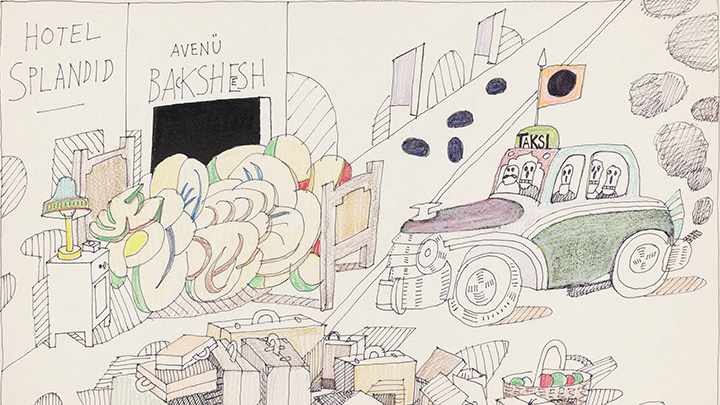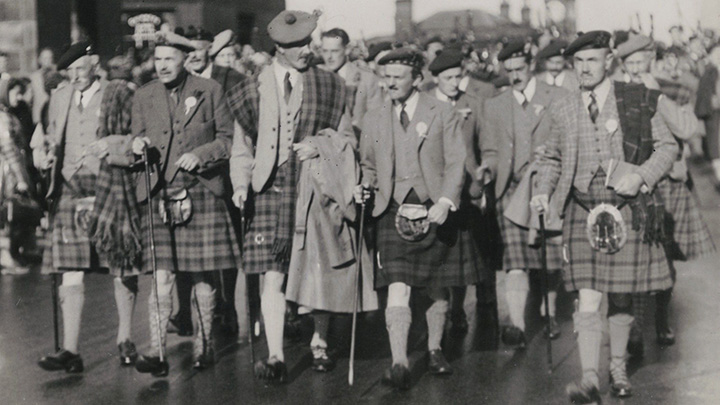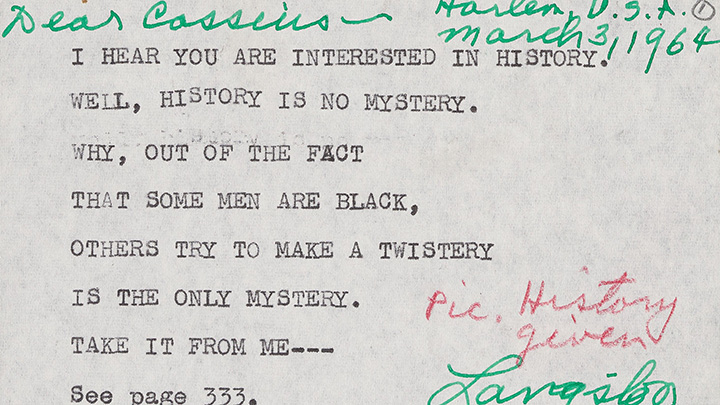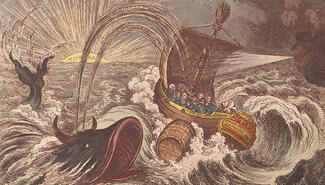Recently digitized: Saul Steinberg and Langston Hughes materials
In December, 5,800 new images were added to the library’s digital collections. (Some materials may be viewed online only by members of the Yale community, due to copyright or other restrictions, however.)

Among the new entries were two boxes of artwork by the American artist Saul Steinberg (1914–1999), famous for his drawings and collages for Harper’s Bazaar, Vogue, Fortune, and other 20th-century periodicals—and especially for his popular cover art for The New Yorker. Steinberg’s artwork is in several museums, including the Museum of Modern Art, Art Institute of Chicago, and Yale University Art Gallery.

The recent digitizations of personal correspondence from the papers of Harlem Renaissance writer and poet Langston Hughes (1901–1967) include letters from novelists Zora Neale Hurston and Fanny Hurst and a postcard Hughes sent in 1964 to Cassius Clay (Mohammed Ali). There are also several photographs from a trip Hughes took to Nevada with poet Norman MacLeod and the journalist and civil rights attorney and judge Loren Miller.
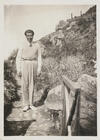
Also newly digitized are photos and correspondence from the papers of exiled Russian poet, opera singer, and revolutionary Nikolai Nadezhin (1885–1959). During the 1950s, Nadezhin worked with the Scottish writer Compton Mackenzie, contributing articles on Russian composers to Mackenzie’s publication, The Gramaphone Monthly Review. (Mackenzie, aka Monty, is pictured “at back” in the collection’s circa 1914 photo of a Highlanders march, shown in the gallery of images above.)
Millions of digitized works from Yale Library collections are available online, and new images are added on a regular basis. Visit Digital Collections to view the highlights and search the database.
—Deborah Cannarella

